TOSHIBA TEC Singapore S-0601 Dot Printer User Manual 8
TOSHIBA TEC Singapore Pte Ltd Dot Printer Users Manual 8
Contents
- 1. Users Manual 1
- 2. Users Manual 2
- 3. Users Manual 3
- 4. Users Manual 4
- 5. Users Manual 5
- 6. Users Manual 6
- 7. Users Manual 7
- 8. Users Manual 8
- 9. Users Manual 9
- 10. Users Manual 10
- 11. Users Manual 11
- 12. Users Manual 12
- 13. Users Manual 13
- 14. Users Manual 14
- 15. Users Manual 15
- 16. Users Manual 16
- 17. Users Manual 17
- 18. Users Manual 18
Users Manual 8
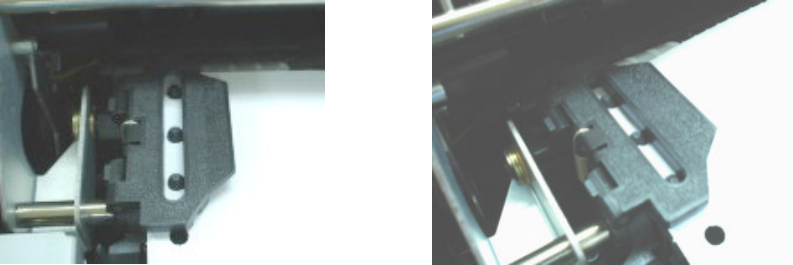
Holding paper against the Easy-Load Platform, fit the paper into the tractor.
Close the tractor Door. Repeat the procedure for the left tractor and adjust the left forms
tractor to accommodate the width of the form.
5. Move the left tractor to make the paper flat. Do not stretch the paper too taut. Push the left
locking lever down to secure the tractor in place.
6. Press the FF/LOAD button to advance the paper to the top-of-form position from which
printing can start. The printer is automatically placed in the Ready State.
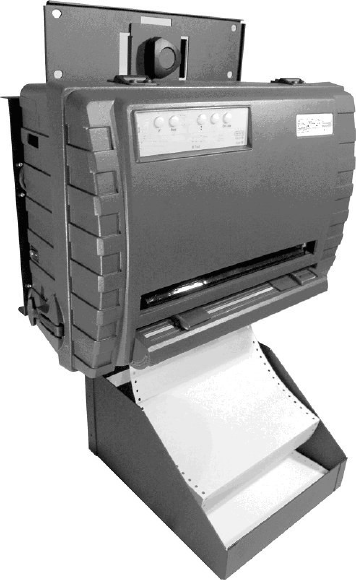
7. Press the READY button to place the printer on line. Print a sample page and check the
page margins. Make the following adjustments, as necessary:
- Horizontal alignment. Move the forms tractors as required with paper parked.
- top-of-form setting. Use the printer Set-Up mode (see Chapter 4, “using the Set-Up
Mode”) or the Top-of-form Adjustment mode (see the section, “Feeding and
Positioning Paper,” later in this chapter).
- Margin settings. Use your software or the printer Set-Up mode (see chapter 4,
“using Set-Up Mode.”)

Unloading Continuous Forms
To unload continuous forms:
1. Make sure that the Paper Select lever is set to the continuous forms position.
2. Press the PARK button. The continuous forms paper is retracted to the park position. If
the paper cannot be retracted in one operation, continue to press the PARK button until the
paper is parked.
3. To remove the paper, raise the Tractor Doors and lift out the paper.
Recovering from an Unexpected Unloading Operation
If you have accidentally pressed the PARK button, you can cancel this operation in two ways
only if this unexpected operation was unsuccessful (the paper was not actually parked, and
the Fault indicator is blinking).
• Press the READY button.
The printer switches to the Ready state and the paper moves according to the setting
of the Set-Up option.
• Press the FF/LOAD button.
The paper moves back to the place it was positioned before you pressed the PARK
button.
Automatic-Tear-Off Advancing
Your printer has a tear bar that allows you to tear off printed pages without wasting paper.
The tear bar is at the rear edge of the paper exit slot.
Your printer is factory-set for automatic tear-off. When a printing job ends (including a form
feed command), the bottom perforation of the last printed page is automatically positioned in
front of the tear bar. The printed page may now be pulled against the tear bar of the tope
cover. You can change the positioning delay from one to five seconds, using the Set-Up
mode.
Using Single Sheets
This section describes how to load paper in the Single Sheet Paper Tray. The Single Sheet
Paper Tray allows paper to be loaded manually, one sheet at a time.
Loading a Single Sheet of Paper
To load a sheet of paper using the Single sheet Paper Tray:
1. Make sure that the printer is turned on. Check that tractor-fed continuous forms are
retracted to the park position. (For details, see the section, “Unloading Continuous
Forms,” later in this chapter.)
Note: The printer can retract continuous forms-paper by a
recommended maximum of 25.4 cm (11 inches) per operation.
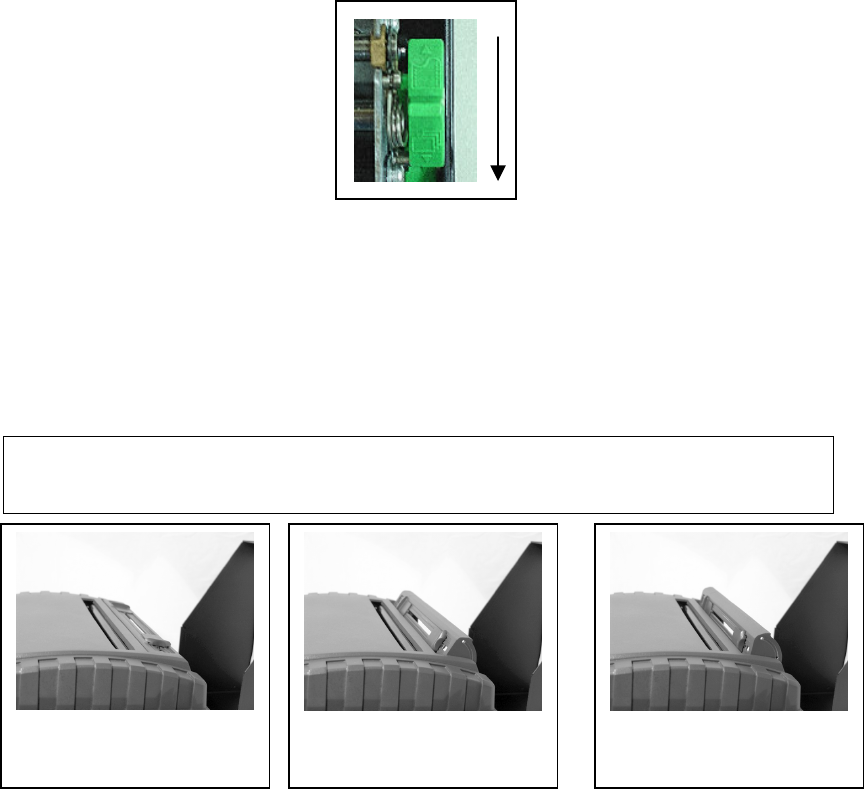
2. If necessary, reset the Print Gap lever. (See the section, “Adjusting for Paper
Thickness,” earlier in this chapter.)
3. Move the Paper Select lever toward front of printer. (This lever is at the right under
the cover.)
4. Raise the Single Sheet Paper Tray until it locks in Paper Support Position 2.
5. Line up the right sliding edge guide with the notch on the Paper Support. Adjust the
left sliding edge guide to the width of the paper. Insert the sheet into the raised
Paper Support. Make sure that the bottom edge of the paper engages snugly with
the platen. The paper will automatically advance to the top-of-form position if the
Single Sheet Load option of the Set-Up mode is set to Automatic.
Note: The factory setting for the Single Sheet Load option is automatic loading after
paper detection. If you set this option to manual, you will have to press
FF/LOAD to feed the paper
.
6
.
If you want to slightly adjust the Top-of-Form position, See “Top-of-Form
Adjustment” later in this chapter.
7. Place the printer in the Ready state. Print a sample page
and check the page
margins. Make the following adjustments, as necessary:
• Horizontal alignment. Readjust the paper guides if required.
• Top-of-form setting. Use the printer Set-Up mode (see Chapter 4, “Using Set-Up
Mode,”) or the TOF Adjustment mode (see the section, “Feeding and Positioning
Paper,” later in this chapter).
• Margin settings. Use your software or the printer Set-Up mode (see Chapter 4,
“Using Set-Up Mode.”)
Paper Support Position 1
Operating and tear-off
using continuous forms
Paper Support Position 2
Loading Single Sheets
Paper Support Position 3
Loading Continuous
Forms
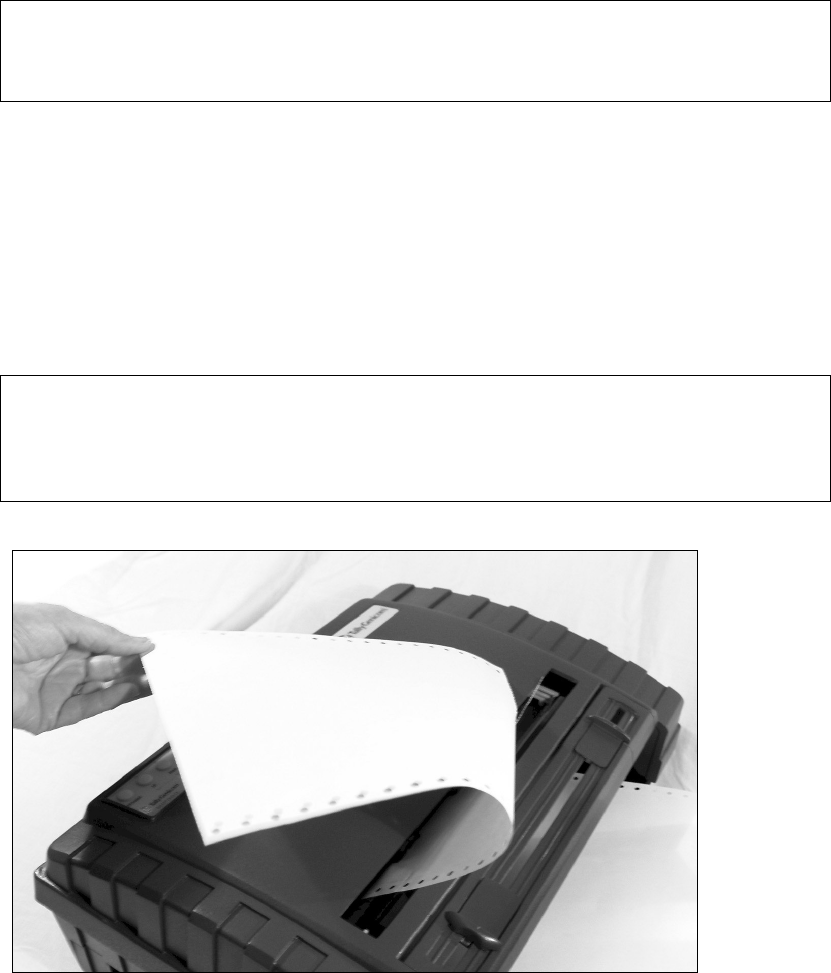
Ejecting Single Sheets
If you print using software with form feed, each sheet is ejected automatically upon the
completion of the page printing. To manually eject sheets of paper:
• Press the FF button to execute a forward form feed.
Note: If the printing job does not include a form feed command, the paper is
automatically fed so that you can see the last printed line. Press on the
FF/LOAD button to position the next paper perforation in front of the tear
bar.
The paper is automatically retracted when the printer receives more data. For tearing
off the paper, see the next subsection “Manual Tear-Off Advancing.”
Manual Tear-Off Advancing
If you have set the TEAR option of the INSTALL function to MANUAL, tear off the
paper by:
1. Press the READY to put the printer in pause mode. The printer will position the
paper perforation in front of the tear bar.
Caution: If the paper perforation is not positioned in front of the tear bar, the length of
your paper may not be specified correctly in your software or the Set-Up
mode. Check that the paper length is specified correctly. For information on
specifying page length using the Set-Up mode, see Chapter 4, “Using Set-
Up Mode.”
2. Tear the paper off at the perforation by sweeping paper to the rear.
Tearing Off Continuous Forms
Feeding and Positioning Paper
Print Area Definition
• Top-of-Form:
This value defines the distance between the edge of the paper and the place where
you allow the printing to begin (position of line number 1). You can adjust this
distance according to the condition of your paper (for example, pre-printed forms).
When you load the paper, the printer feeds the paper to this position, waiting for
printing commands.
• Form Length:
Set the corresponding Set-Up option (FORM LENGH) according to the actual
physical page length (distance between two perforations for continuous forms).
This will allow the printer to know exactly where the print head is and to position it at
the same position when a form feed occurs.
• Top line:
This is the line where the printing actually starts. To define a top margin, select the
number of this line within Set-Up mode (TOP MRGN option). Example: In the
following picture, TOP MRGN option is set to 3.
• Bottom line:
This is the line where the printing actually stops. To define a bottom margin, select
the number of this line within Set-Up mode (BOTTOM MRG option). Example: In
the following picture, BOTTOM MRG option is set to 50.
• Left column:
This is the column where the printing actually starts. To define a left margin, select
the number of this column within Set-Up mode (LEFT MARGN option). Example:
In the following picture, LEFT MARGN option is set to 4.
• Print area:
Print area defined by the corresponding Set-Up options: Form Length, Top-of-
Form, Top Margin, and Bottom Margin.
• Paper perforation:
The perforation defines the physical page length.
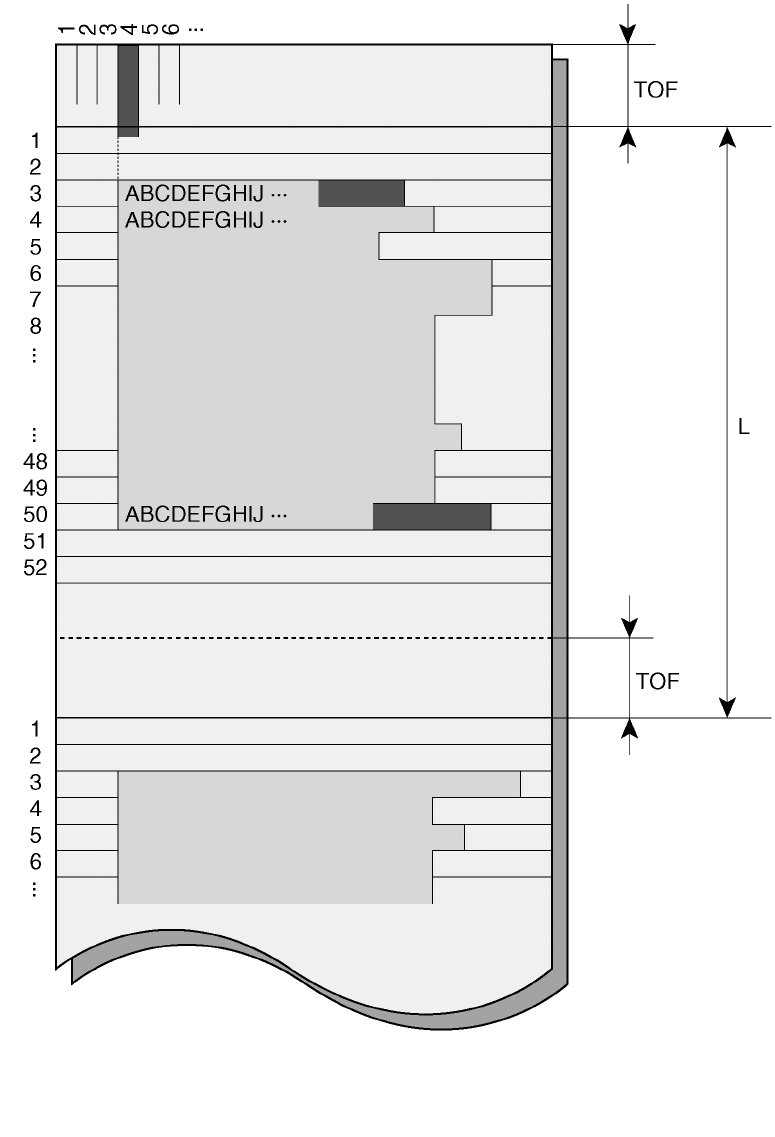
Print Area Definition
Feeding and Positioning Paper
Print Area Definition
• Top-of-Form:
This value defines the distance between the edge of the paper and the place where
you allow the printing to begin (position of line number 1). You can adjust this
distance according to the condition of your paper (for example, pre-printed forms).
When you load the paper, the printer feeds the paper to this position, waiting for
printing commands.
• Form Length:
Set the corresponding Set-Up option (FORM LENGH) according to the actual
physical page length (distance between two perforations for continuous forms).
This will allow the printer to know exactly where the print head is and to position it at
the same position when a form feed occurs.
• Top line:
This is the line where the printing actually starts. To define a top margin, select the
number of this line within Set-Up mode (TOP MRGN option). Example: In the
following picture, TOP MRGN option is set to 3.
• Bottom line:
This is the line where the printing actually stops. To define a bottom margin, select
the number of this line within Set-Up mode (BOTTOM MRG option). Example: In
the following picture, BOTTOM MRG option is set to 50.
• Left column:
This is the column where the printing actually starts. To define a left margin, select
the number of this column within Set-Up mode (LEFT MARGN option). Example:
In the following picture, LEFT MARGN option is set to 4.
• Print area:
Print area defined by the corresponding Set-Up options: Form Length, Top-of-
Form, Top Margin, and Bottom Margin.
• Paper perforation:
The perforation defines the physical page length.
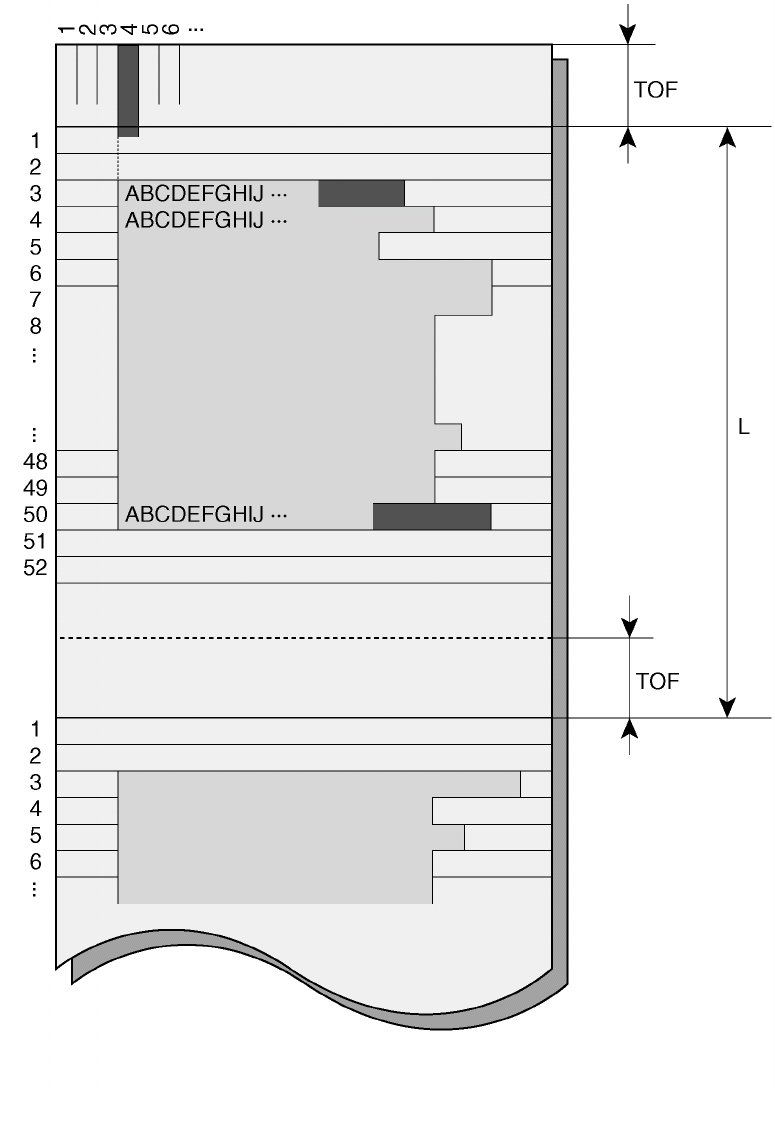
Form Feed
Use the form feed function to move paper forward. This function is valid whenever the
printer is not receiving or printing data and has no fault. Pressing the FF/LOAD button
feeds the paper to the next Top-of-form position.
Print Area Definition
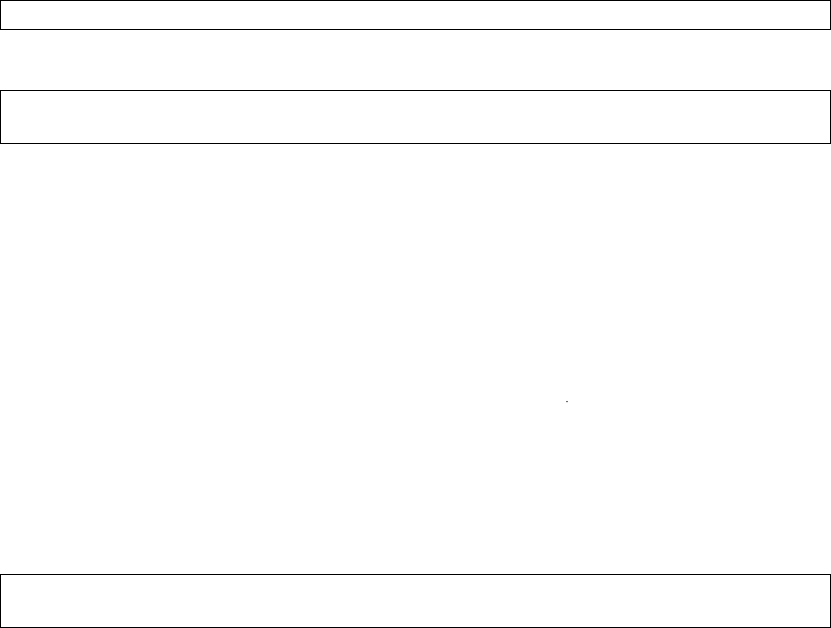
Top-of-Form Adjustment
Note: For Top-of-Form definition, see the previous section, “Print Area Definition.”
You can adjust the Top-of-Form value within the range from 0 to 99/60 inches.
Note: The horizontal embossed rib under the red cursor on the print head carriage
corresponds to the base line of the characters to be printed.
1. Position the paper at the current Top-of-Form position:
– For continuous forms, park the paper, then press the FF/LOAD button.
– For a single sheet, simply insert the sheet in the paper support and guide.
Paper is automatically fed to the Top-of-Form position.
2. Enter the Top-of-Form mode by pressing the SETUP/EXIT and ALT buttons at the
same time. The printer beeps and the Ready and Fault indicators flash alternately
indicating it is in the Top-of-Form mode.
3. Adjust the Top-of-Form value:
– To increase the Top-of-Form value of a 1/60 inch, press the NEXT button.
The paper moves forward.
– To decrease the Top-of-Form value of a 1/60 inch, press the PREVIOUS button.
The paper moves backward.
– To reset the Top-of-Form value to 0, press the ALT-PREVIOUS button.
The paper moves to the edge of the page (position 0).
Note: If you reach the limit of the permitted range, the printer beeps, and the paper
stops moving.
4. Save the Top-of-Form value:
– To permanently save the value, press the Exit/Save button.
The printer returns to Normal mode.
– To temporarily save the value, press the ALT-NEXT button.
The printer returns to Normal mode. (The new value is lost at the next power-
off.)
Switching Paper Types
If you have more than one type of job, it is often necessary to switch between continuous
forms and single sheets. This section explains how to switch between paper types. It is not
necessary to remove the continuous forms paper from the printer.
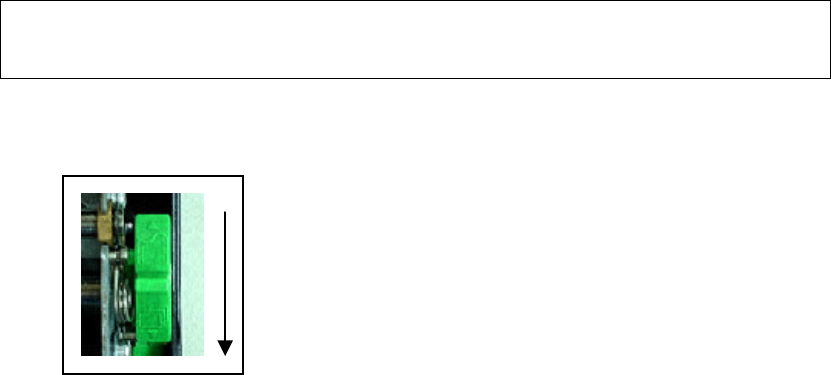
Switching from Continuous Forms to Single Sheets
To switch from continuous forms to single sheets:
1. Tear off your printed pages.
2. Retract the forms paper to the park position by pressing the Park button. The Fault
indicator turns on.
Caution: Retracting many pages by using the Park button without tearing off may
cause paper jams. To avoid damage to your printed pages, be sure to tear
off the printed pages before retracting the continuous forms paper.
3. Move the Paper Select lever to the single sheet position.
4. Raise the Paper tray support and guide to tray position 2. (For details, see the
section, “Using Single Sheets,” earlier in this chapter.) Put a sheet of paper on the
Paper support and guide with its bottom edge aligned with the platen. The paper is
automatically detected and advanced (auto-loading) when it is first inserted to the
top-of-form position. In this mode, if the FF/LOAD button is pushed, the inserted
sheet will be ejected from the printer and the Fault LED will light, indicating a paper
out condition.
You are now ready to print using single sheets.

Switching from Single Sheets to Continuous Forms
To switch from single sheets to continuous forms:
1. If a sheet of paper is loaded, remove the paper by pressing the FF/LOAD button.
2. Move the Paper Select lever to the continuous forms position.
3. Press the FF/LOAD button. The continuous forms paper advances from the park
position to the top-of-form position.
You are now ready to print using continuous forms paper.
Tips on Paper Handling
General Tips
• Use high-quality paper. Do not use paper that is wrinkled or curled at the edges.
• Do not use paper with staples or metal parts.
• Do not use paper with unpredictable variations in thickness, such as paper with
partial multilayers, paper with embossed printing.
• Store paper in a clean, dry environment
.
Multipart Forms
• Avoid using carbon-interleaved single sheets if possible. Printing tends to become
misaligned on the bottom sheet.
• Set the paper thickness lever to best accommodate the multipart form thickness.